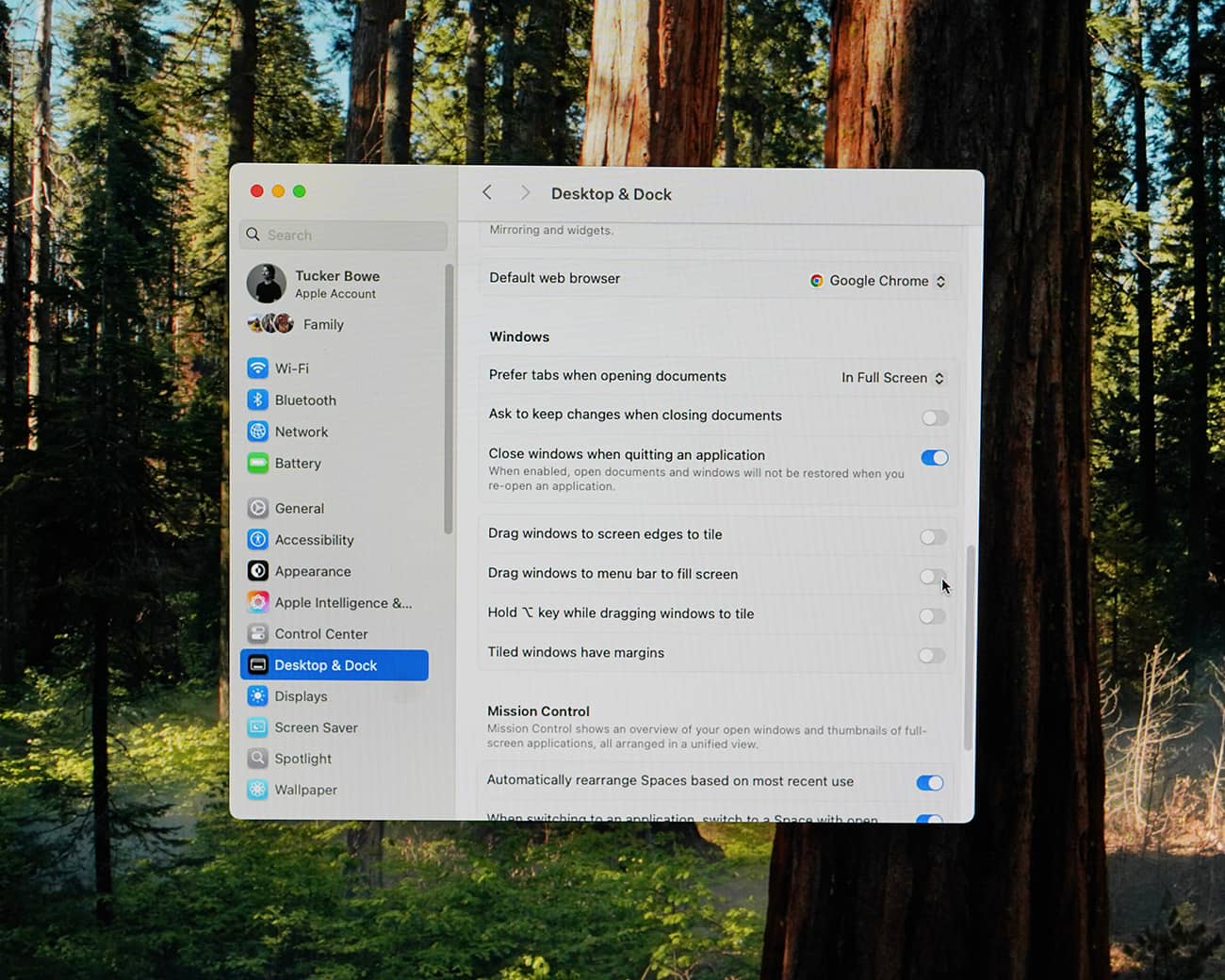When Apple rolled out macOS Sequoia earlier this fall, it brought a number of new features to the Mac. And while iPhone Mirroring and a new Passwords app grabbed the headlines, it also delivered new windows management features that are more practical for everyday use.
The most useful of these is a “Move & Resize” feature that, when accessed through your Mac’s Menu Bar via the Windows menu, let’s you quickly arrange up to four windows around your screen — you can split them horizontally, vertically or into your screen’s corners — so you can see them all at the same time.
On the flip side, it also introduced a feature called “Window Tiling.” This automatically suggests a tiled position for a window — or more accurately, automatically resizes a window — when you drag it to the edge of your screen.
You’ll see a white border appear when your mouse reaches the edge of the screen; if you un-click, the window will automatically take that position on your screen.
But Window Tiling can be annoying — some people like having manual control and don’t want their windows to resize automatically. The good news is if you don’t like it (or don’t want to learn how to get the most out of it), you can turn off Window Tiling.





